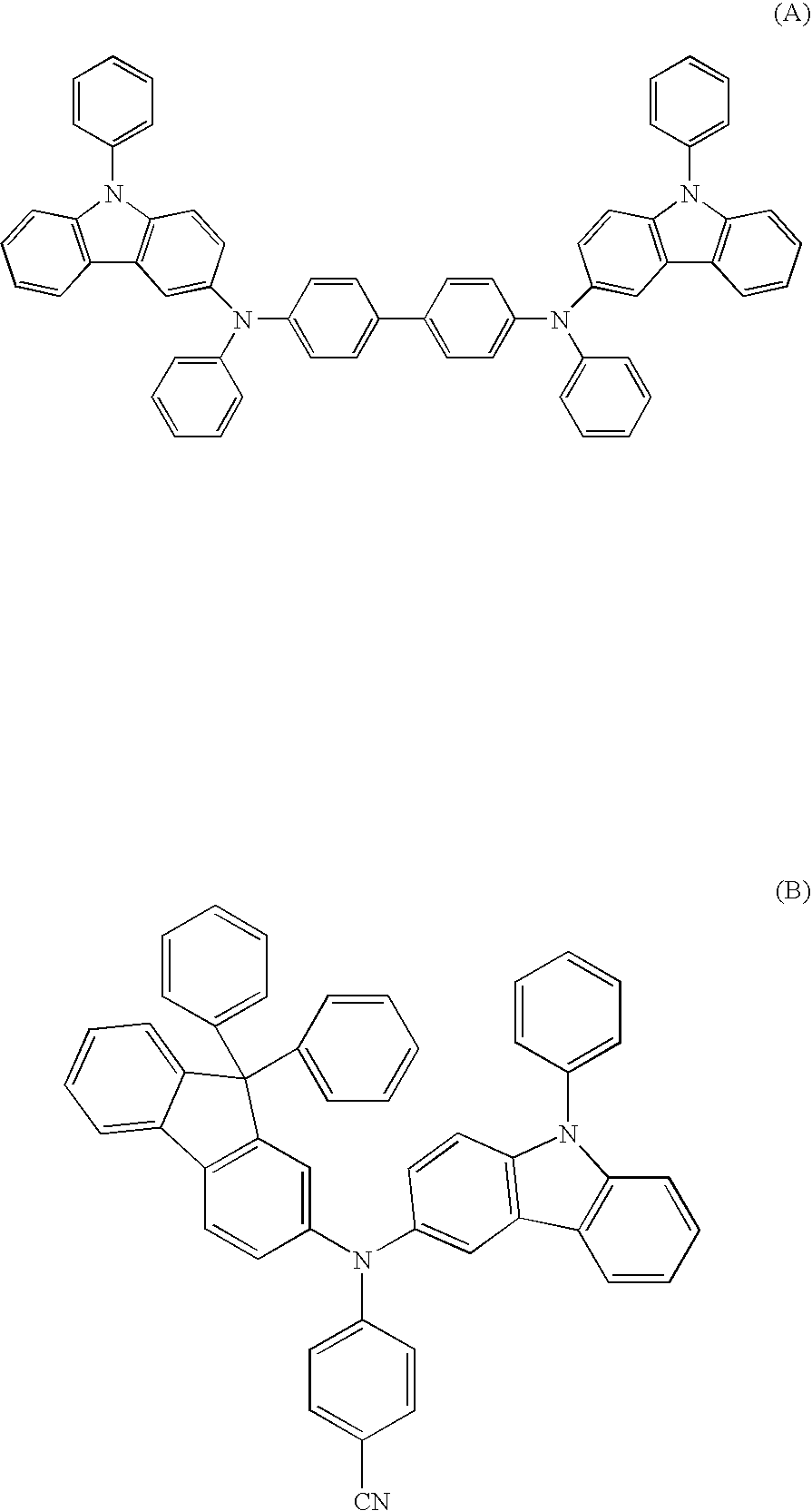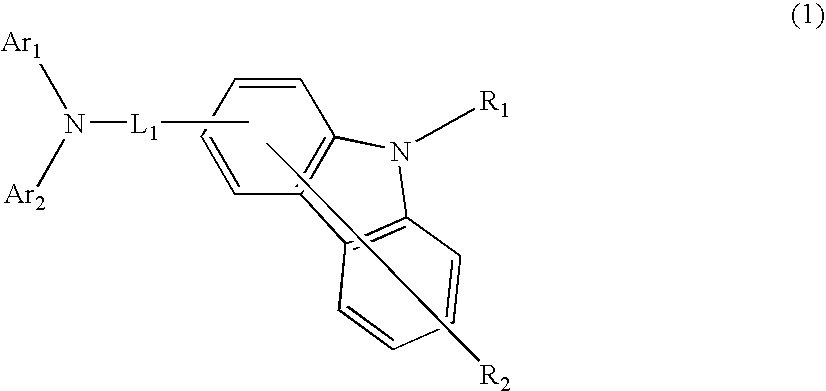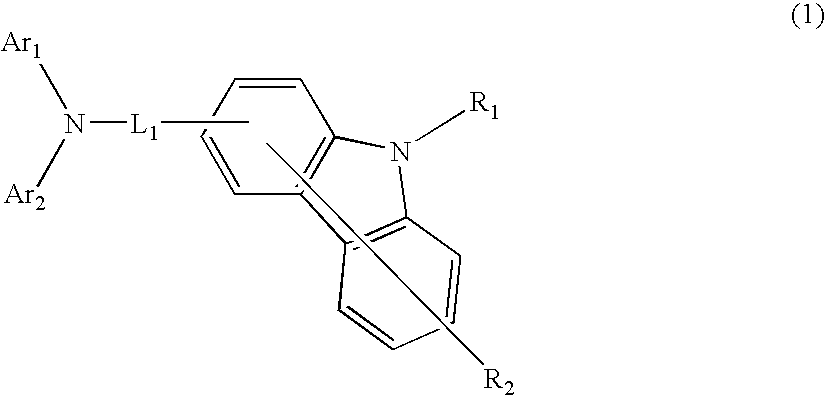Aromatic amine derivative and organic electroluminescence device using the same
an organic electroluminescence and amine technology, applied in the direction of discharge tube luminescnet screen, other domestic articles, natural mineral layered products, etc., can solve the problems of low efficiency of light emission, compound vapor deposition temperature rise, and insufficient light emission efficiency, so as to improve recombination efficiency, enhance light emission efficiency, and enhance light emission efficiency
- Summary
- Abstract
- Description
- Claims
- Application Information
AI Technical Summary
Benefits of technology
Problems solved by technology
Method used
Image
Examples
synthesis example 1 (
Synthesis of Compound H1)
[0272]Under an atmospheric argon gas flow, 6.0 g of Intermediate 2, 8.6 g of Intermediate 6, 404 mg of Pd(PPh3)4 was placed into 26 ml of 2M sodium carbonate aqueous solution and toluene, the reaction was allowed to proceed under refluxing for 4 h.
[0273]The resultant solution was cooled down and was filtered through sellite, and the filtrate was separated. An organic layer was washed with tap water, purifying by means of a silicagel chromatography (toluene), re-precipitated (hexane, dichloromethane) the resultant solid three times. Washing the solid with n-hexane, vacuum dried to obtain 6.93 g of yellowish white solid, which was analyzed by FD-MS and identified as Compound H1.
synthesis example 2 (
Synthesis of Compound H2)
[0274]Compound H2 was synthesized in the same manner as Synthesis of Compound H1 in Synthesis Example 1 except that Intermediate 8 was employed instead of Intermediate 6. The resultant solid was analyzed by FD-MS and identified as Compound H2.
synthesis example 3 (
Synthesis of Compound H3)
[0275]Compound H3 was synthesized in the same manner as Synthesis of Compound H1 in Synthesis Example 1 except that Intermediate 10 was employed instead of Intermediate 2 and that Intermediate 3 was employed instead of Intermediate 6. The resultant solid was analyzed by FD-MS and identified as Compound H3.
PUM
| Property | Measurement | Unit |
|---|---|---|
| light transmittance | aaaaa | aaaaa |
| work function | aaaaa | aaaaa |
| transmittance | aaaaa | aaaaa |
Abstract
Description
Claims
Application Information
 Login to View More
Login to View More - R&D
- Intellectual Property
- Life Sciences
- Materials
- Tech Scout
- Unparalleled Data Quality
- Higher Quality Content
- 60% Fewer Hallucinations
Browse by: Latest US Patents, China's latest patents, Technical Efficacy Thesaurus, Application Domain, Technology Topic, Popular Technical Reports.
© 2025 PatSnap. All rights reserved.Legal|Privacy policy|Modern Slavery Act Transparency Statement|Sitemap|About US| Contact US: help@patsnap.com



